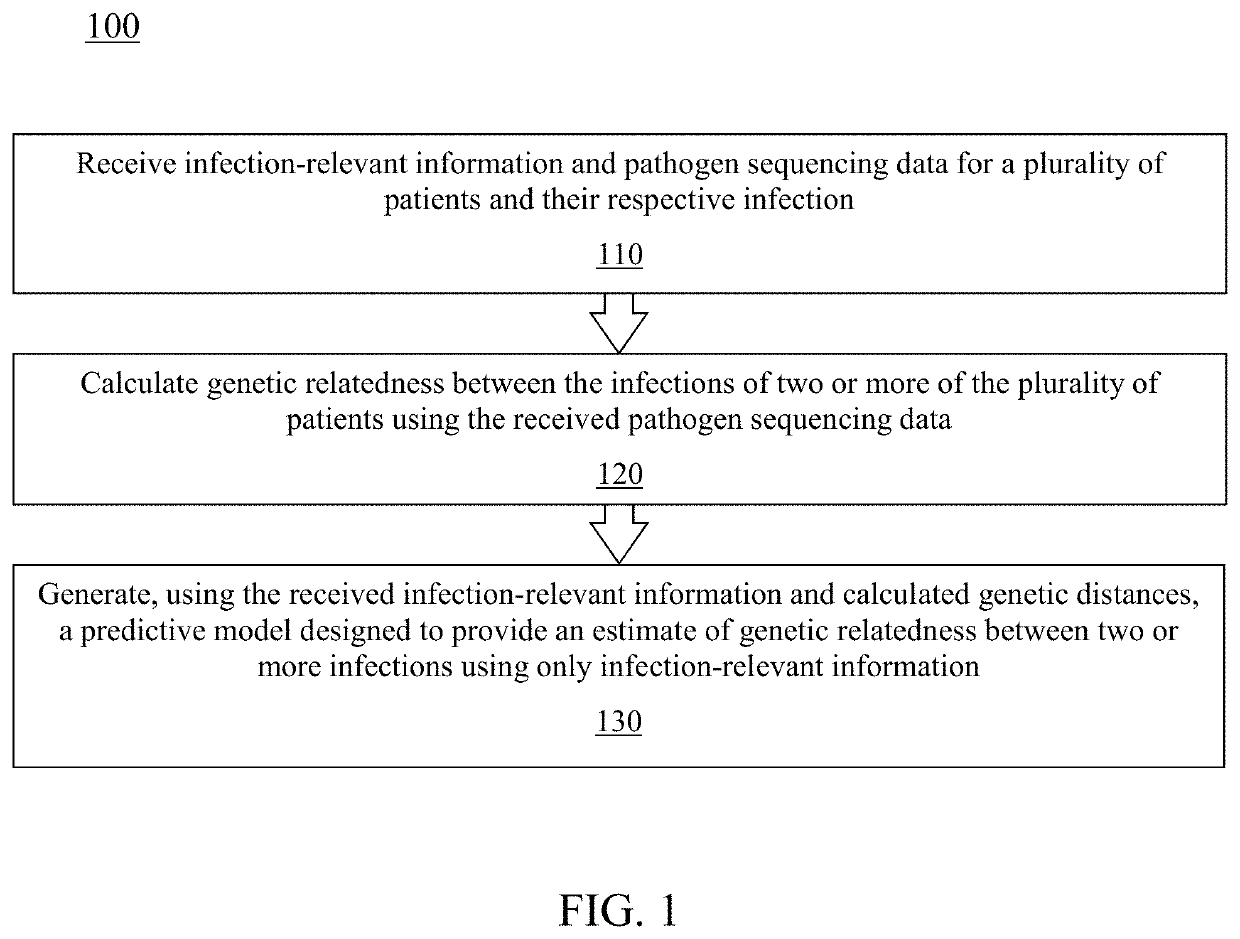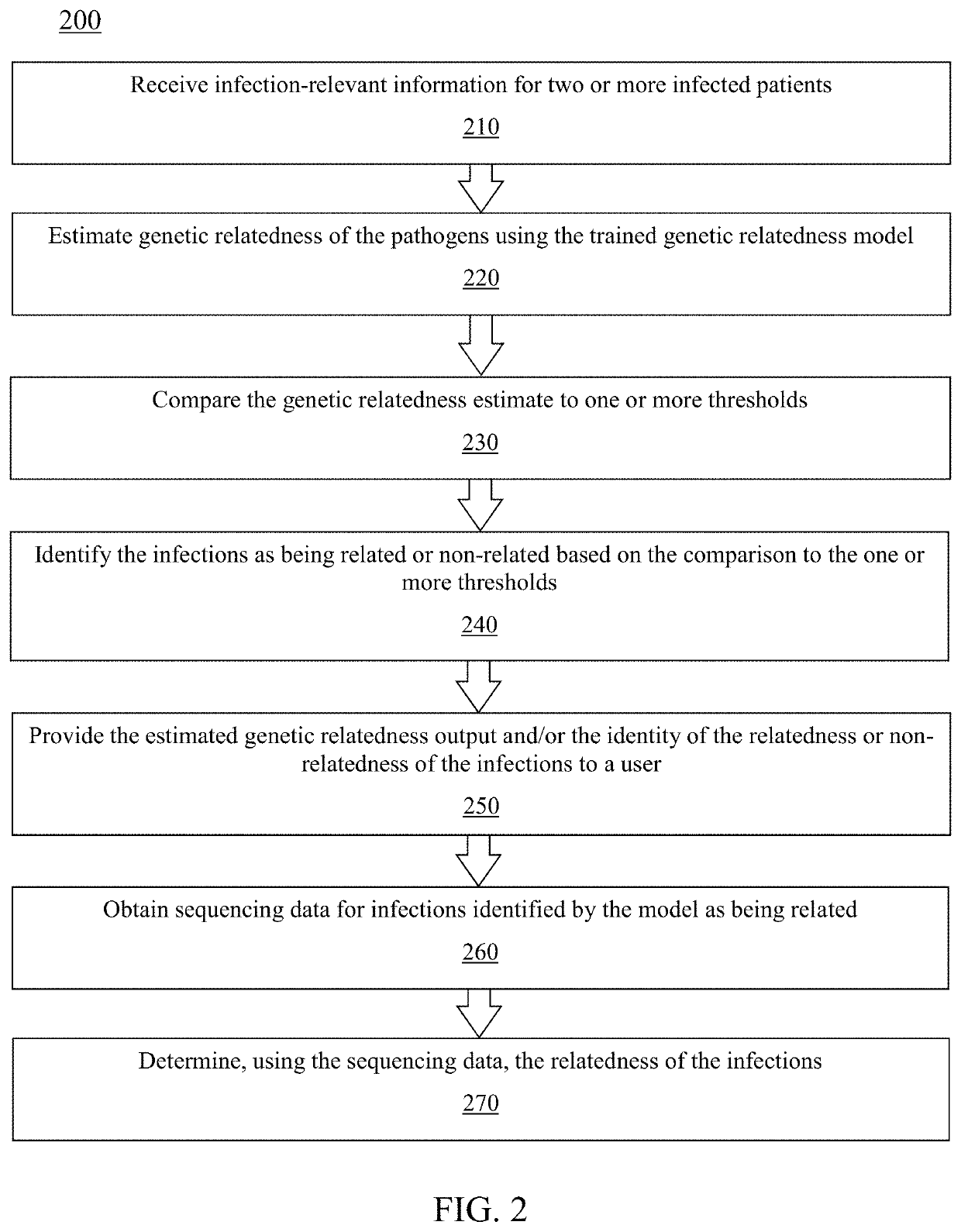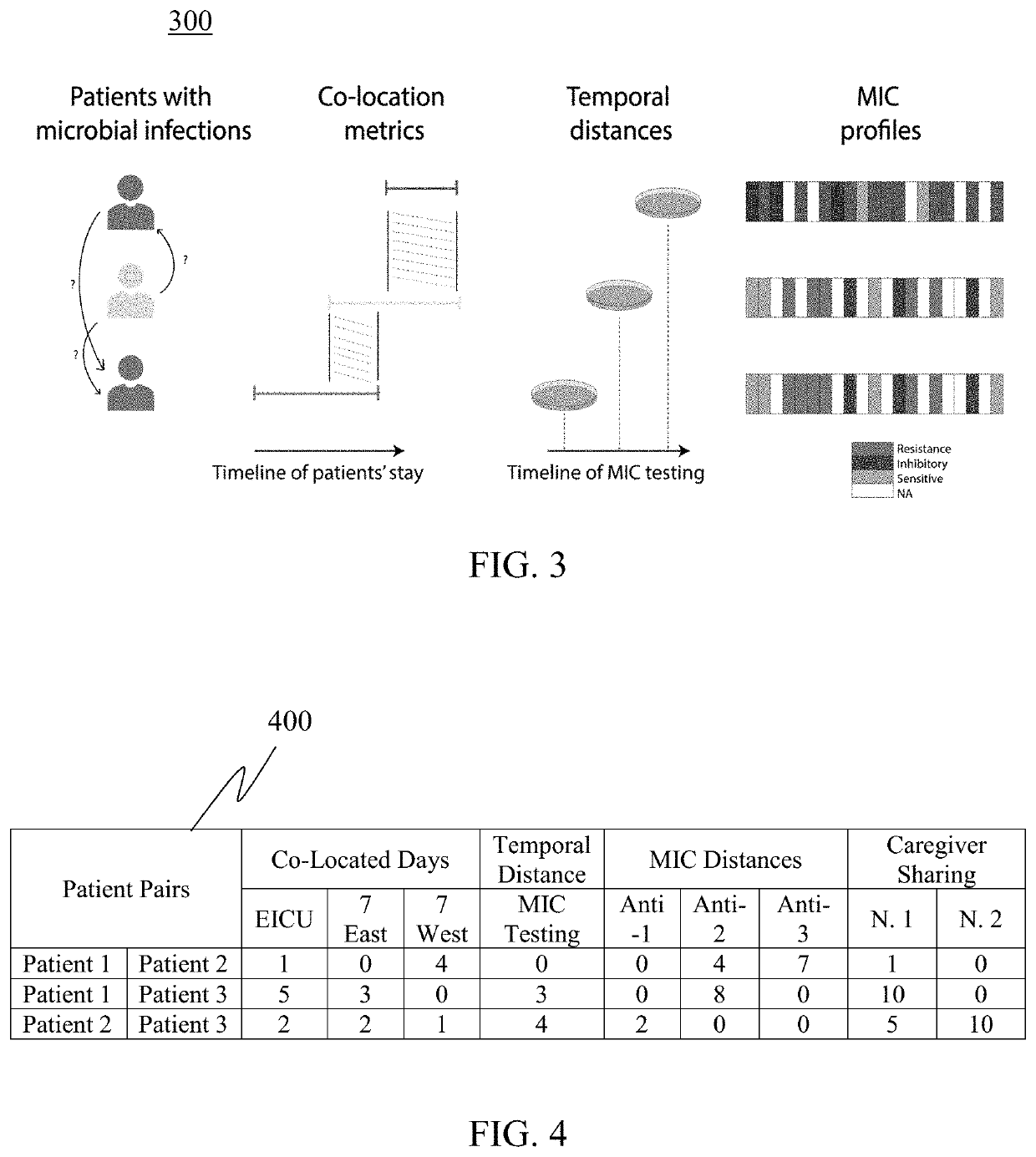System and method using clinical data to predict genetic relatedness for the efficient management and reduction of healthcare-associated infections
- Summary
- Abstract
- Description
- Claims
- Application Information
AI Technical Summary
Benefits of technology
Problems solved by technology
Method used
Image
Examples
Embodiment Construction
[0028]The present disclosure describes various embodiments of a system and method for characterizing infections by estimating the genetic relatedness of the infections using a trained model without sequencing data. The system uses a trained genetic relatedness model to analyze infection-relevant information for each of two or more infected patients. The infection-relevant information includes, for example, an antibiotic resistance profile for the patient's infection, a geo-temporal record for the patient, and a caregiver history for the patient. The trained genetic relatedness model estimates, based on the analysis, a genetic relatedness of the patients' infections. Using predetermined thresholds and the estimated genetic relatedness, the system characterizes the patients' infections as related or non-related. A representation of the estimated genetic relatedness between the at least two of the two or more infections is provided to a user such as an infection control agent, who util...
PUM
 Login to View More
Login to View More Abstract
Description
Claims
Application Information
 Login to View More
Login to View More - R&D
- Intellectual Property
- Life Sciences
- Materials
- Tech Scout
- Unparalleled Data Quality
- Higher Quality Content
- 60% Fewer Hallucinations
Browse by: Latest US Patents, China's latest patents, Technical Efficacy Thesaurus, Application Domain, Technology Topic, Popular Technical Reports.
© 2025 PatSnap. All rights reserved.Legal|Privacy policy|Modern Slavery Act Transparency Statement|Sitemap|About US| Contact US: help@patsnap.com



